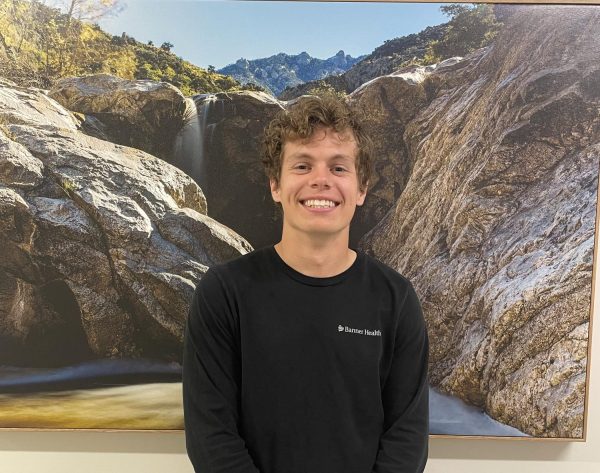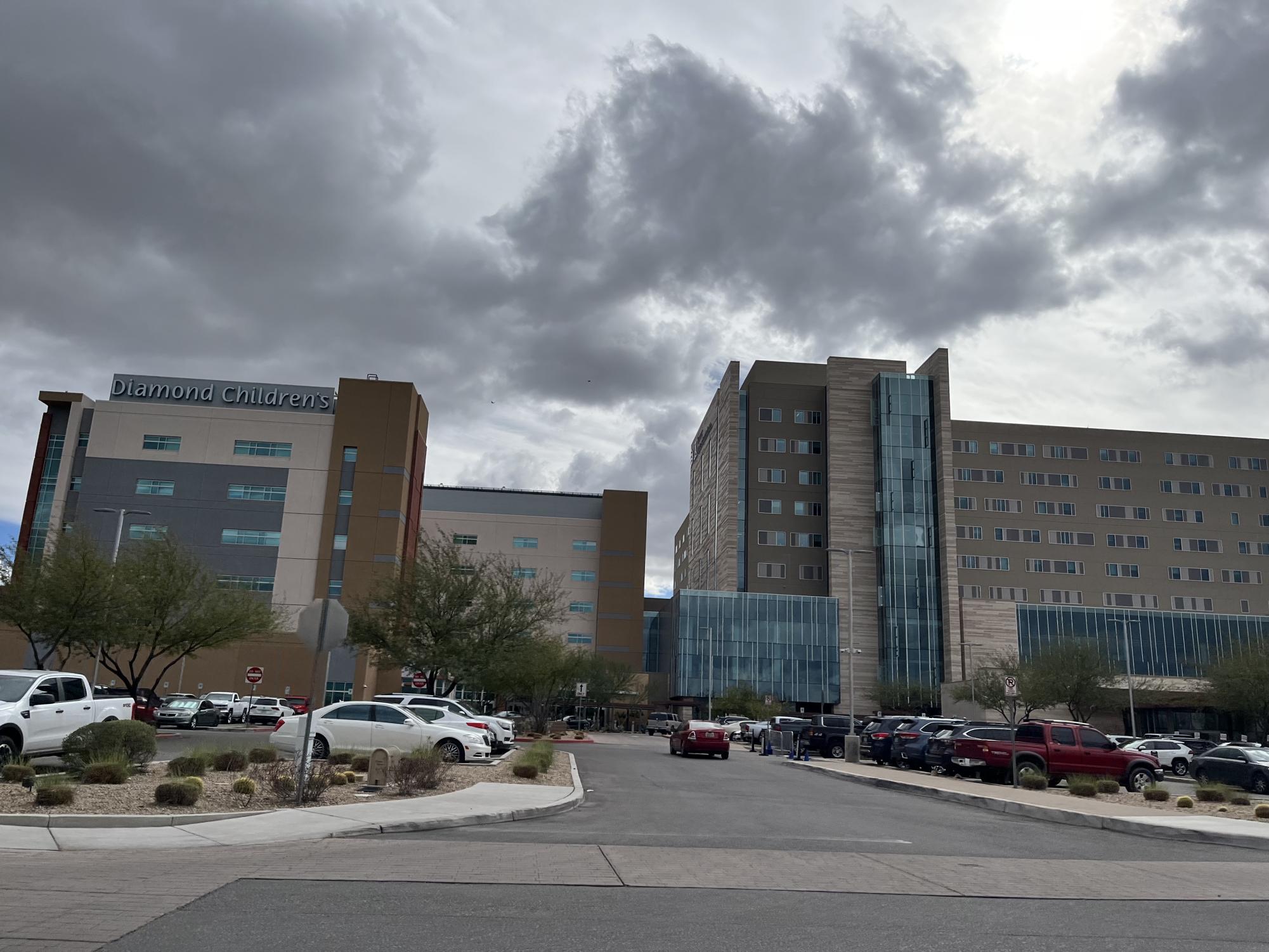The American Nurses Association reports that 79% of intensive care nurses nationwide experience feelings of exhaustion, and 57% of all nurses feel overwhelmed nationwide.
Harry Loida feels that pressure nightly when he works the Cardiovascular ICU at Banner-University Medical Center in Tucson.
Loida graduated from the University of Arizona in December 2021 and chose to stay in Tucson. He said he felt the sweat equity he would contribute to the CVICU would be the best experience for his future career.
“In the beginning, I just wanted to know everything, to be the best I can be. But I came to accept that I didn’t know everything and from then I just tried to be a sponge,” he said. “For example, I have tweaked so many of my daily tasks and the way I perform them because I saw a veteran nurse do it in a more logical way. Little stuff like that has been the biggest help.’’
That nursing shortage is real in Arizona, which ranks among the top five states grappling with severe nursing shortages, heightened by factors such as burnout, retirements and not enough nurses replacing those who leave.
Even predating the pandemic, a considerable percentage of nursing graduates opted to leave their positions within the first years of their careers.
The pandemic put additional strains on the healthcare system in both rural and urban areas.
A 2019 report from the Arizona Hospital and Healthcare Association showed that over 80,000 qualified nursing program applicants nationwide were turned away.
“What we see, the nursing shortage is cyclical over history,” said Kathy Malloch, a consultant with the Arizona Board of Nursing. “The pandemic exacerbated it, made it much more difficult because unvaccinated patients came to hospitals and nurses had to care for them. And the nurses got sick.”
Malloch is one of three consultants on the federal 1803 grant, which allocates funding to Arizona hospitals for a nursing education pilot program to address industry needs. The money, from the United States Department of Housing and Urban Development, can be spent on staffing preceptors, licensed nurses who oversee nursing students on their clinical rotations.
“It also includes additional education for people wanting to go into a different area … from medical surgical nursing to critical care nursing or oncology,” said Malloch.
The 1803 grant totals $75 million over three years. In the grant’s first year, which ends on June 30, the program has trained 64 specialty registered nurses and placed over 1,000 new grad nurses into hospitals statewide. Banner-UMC and TMC have received funding from this grant for their new graduate residency programs.
“(For the future) we’re asking the grantees to figure out … how they’re going to make it sustainable without the new grant. How do they build that in so they can afford to do these things on a regular basis in their regular budget,” said Malloch.

On Loida’s CVICU at Banner, anywhere from 15-23 nurses work a shift, many of whom operate specialized equipment. These include the ECMO, which is a machine used to provide prolonged cardiac and respiratory support to patients with life-threatening lung and heart conditions. Many of these specialized machines require a one-to-one nurse to patient ratio, but the unit’s accepted ratio is one nurse for every two patients. Another one to two nurses would help exponentially.
“We have been feeling the shortage hard,” said Loida. “More nurses from different units are required right now. We have a lot of pediatric ICU nurses coming to run devices on our unit every day.”
Throughout his four semesters at the UA School of Nursing, Loida recalled how professors frequently highlighted the nationwide nursing shortage, underscoring the significance of the nursing profession. The COVID-19 pandemic put the spotlight on the nursing industry.
Kayla Martinez recalled when she first started, the halls of the hospital smelled like body odor. The imprint from their N95 masks replaced their smiles and because of supply shortages, nurses were forced to use these masks long past their intended lifespan, compromising both comfort and efficacy.
“I graduated at a strange time in healthcare because my last two semesters were during peak times of the COVID-19 pandemic,” said Martinez.
Martinez graduated from Arizona State University in fall 2021 and was thrown into the thick of it with a fraction of the experience other nursing students had.
“Many hospitals were limiting nursing students and clinicals due to the pandemic. For my nursing program, the typical amount of clinical rotations were 10-14 shifts the last two semesters; however, my cohort only had four rotations each semester,” she said.
The 25 year-old also started in the CVICU and said that entering her career she didn’t feel as ready to be a nurse as she would’ve hoped. She works alongside Loida at Banner-University Medical Center, mostly at night. She, too, believes another nurse or two would be helpful in their unit.
“Some days we receive texts asking nurses to pick up extra shifts because we are short nurses,” she said. “There are some occasions where your patients are so sick and we are so busy that it is difficult to take lunch because there are a lot of orders to complete and/or I don’t feel comfortable leaving the patient for that long. Those shifts can be overwhelming and very draining.”
Despite the challenges at the start of her career, Martinez said she plans to stay in the profession and pursue a master’s degree in nursing education.
Northwest Medical Center is only one-third the size of Banner-UMC and faces a more acute nursing shortage compared to other hospitals in Tucson.
“I can count on my two hands how many lunch breaks I had in eight months of working there,” said Cole Harmon.
After graduating from The University of Arizona with Loida in December 2021, Harmon opted to work in Northwest’s Emergency Department. The unit consisted of 50 beds, with 10 overflow beds and a four-to-one nurse to patient ratio. It is not uncommon to see the ER with a six-hour wait time.
“The worst I’ve heard was like 26 patients that should be admitted upstairs. It is usually 15-20, but we are just holding them down in the ER,” Harmon said. “So having nurses would be nice, but in that scenario, those patients aren’t going anywhere anyways. That’s why it gets backed up; that’s the problem.”
Harmon left Northwest after eight months and now works for a Tucson home health company that aids patients in the weeks following being discharged from the hospital. To him, it was less stress and he doesn’t feel as if he is being stretched to his max.
Harmon has advice for the next generation of nurses:
“Enjoy what you do and stay open minded,” he said. “There are so many opportunities in nursing, so many different jobs out there, so many different hospitals, and so many different units. Just keep exploring.”
Arizona Sonoran News is a news service of the University of Arizona School of Journalism.


